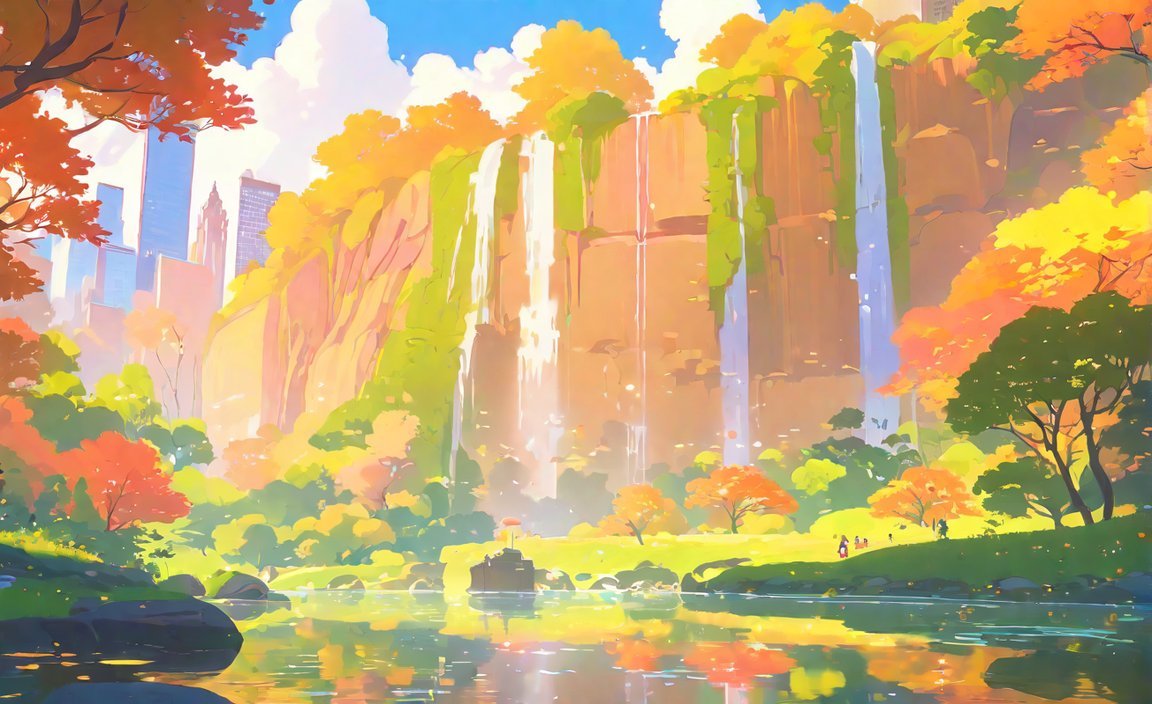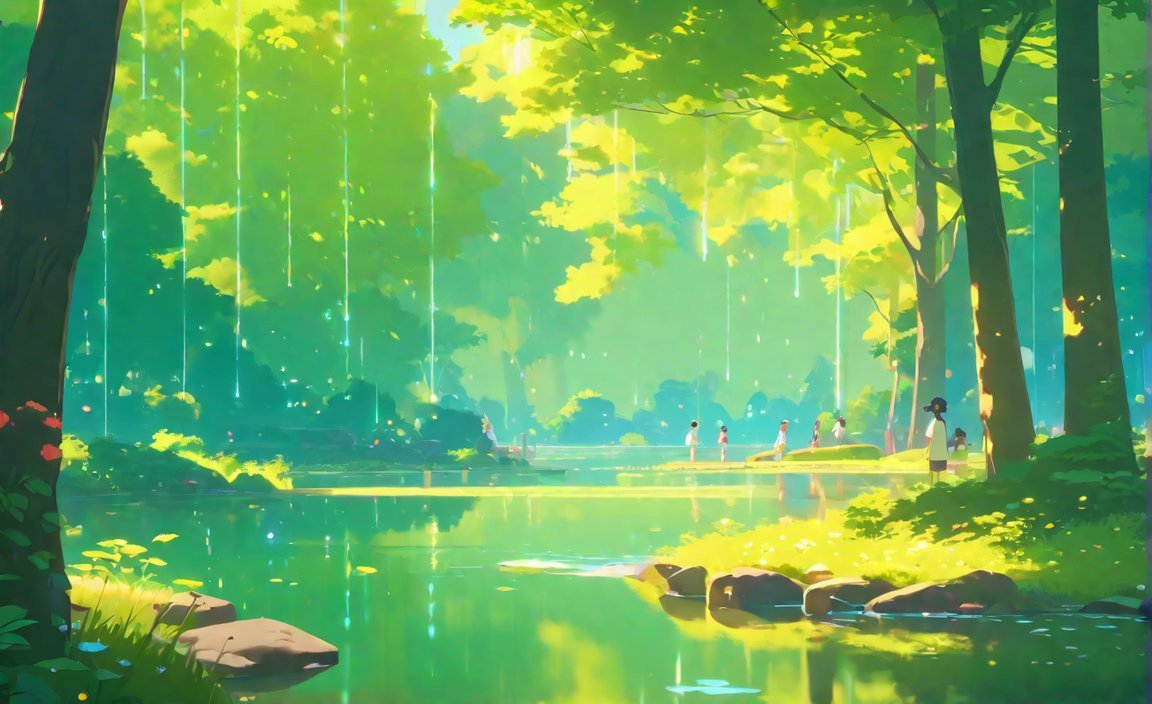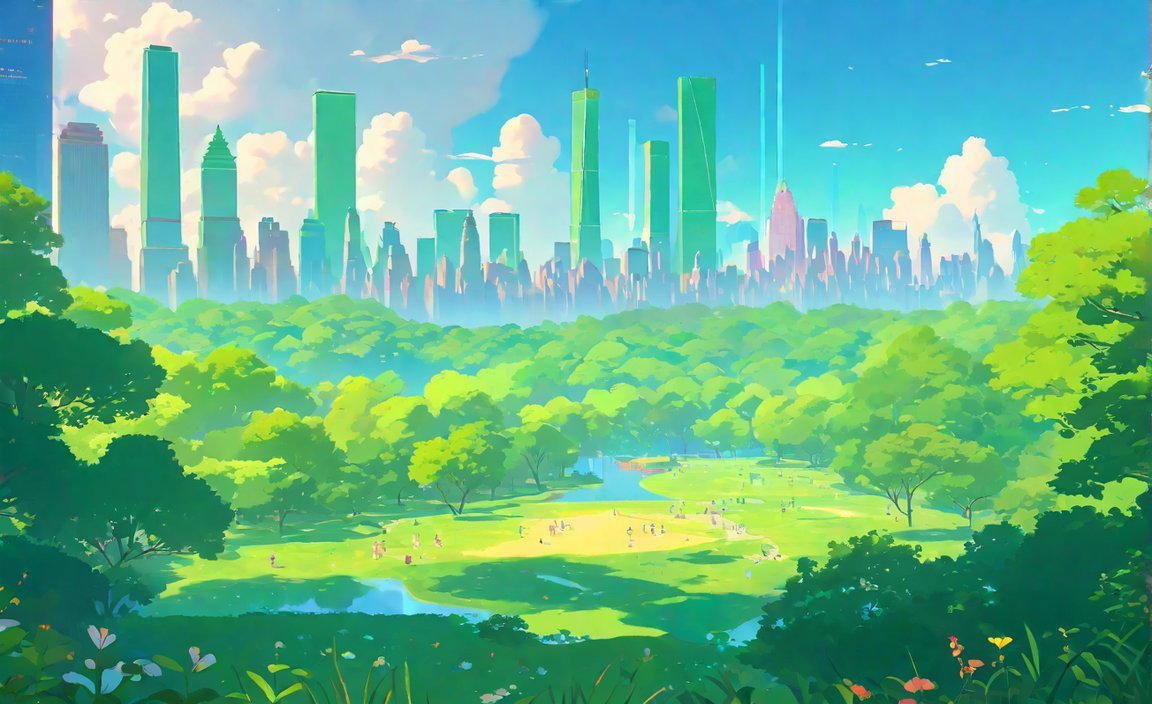Uncovering Fascinating Facts: Central Park’s Iconic Landmarks, Wildlife, and Cultural Legacy. Prepare to be enthralled as we delve into the captivating world of Central Park, New York City’s beloved urban oasis. From its majestic landmarks and diverse wildlife to the profound cultural legacy it has bequeathed upon the Big Apple, this article promises to unravel the hidden gems and intriguing tales that make Central Park a truly iconic destination. Join us on this journey as we shed light on the fascinating facts that epitomize the essence of this renowned park.

Key Takeaways:
- Central Park is the oldest public park in the US and was meticulously designed to reflect the state’s microcosm.
- It covers 843 acres, offering a serene escape from the bustling city streets.
- With approximately 42 million visitors annually, Central Park is the most visited city park in the US.
- The park has a wide range of attractions, including lakes, meadows, a castle, and the Metropolitan Museum of Art.
- The Central Park Zoo is a popular attraction within the park, where visitors can see a diverse collection of animals and participate in educational programs.
- Central Park is the most filmed location in the world due to its lush landscapes and iconic landmarks.
- For more information on Central Park, you can refer to the provided sources.
Facts Central Park
Central Park, the jewel of Manhattan, is a captivating and expansive public park situated in the heart of New York City. It stretches over an impressive 843 acres, offering a serene escape from the bustling city streets. Let’s uncover some fascinating facts about Central Park’s iconic landmarks, wildlife, and cultural legacy.
Historical Significance
Central Park holds great historical significance as it is the oldest public park in the United States. Its creation between 1857 and 1876 was a meticulous endeavor, resulting in a park that beautifully reflects the state’s microcosm. It stands as a testament to New York City’s rich history and continues to be cherished by locals and tourists alike.
Impressive Size and Dimensions
Covering a vast expanse of 843 acres, Central Park stretches 2.5 miles in length and 0.5 miles in width. Just imagine the magnitude and beauty of this green oasis nestled within the concrete jungle of Manhattan! This impressive size allows visitors to immerse themselves in nature and find tranquility amidst the bustling city.
Popular Tourist Destination
Central Park is a magnet for tourists, attracting approximately 42 million visitors annually. It holds the distinction of being the most visited city park in the United States. People from around the world flock to Central Park to experience its enchanting beauty and explore its numerous attractions.
Varied Attractions
What makes Central Park truly remarkable is its vast array of attractions. From picturesque lakes and meadows to a majestic castle and the renowned Metropolitan Museum of Art, there is something for everyone to enjoy. Whether you’re seeking a leisurely stroll, a picnic with friends, or a cultural experience, Central Park has it all.
The Central Park Zoo
Situated within the park is the Central Park Zoo, a beloved attraction for visitors of all ages. This zoo is home to a diverse collection of animals, including playful penguins, mischievous monkeys, and regal tigers. Visitors can immerse themselves in the wonders of nature, participate in educational programs, and marvel at the beauty of the animal kingdom.
A Cinematic Backdrop
Central Park’s beauty has not gone unnoticed by filmmakers, making it the most filmed location in the world. This lush greenery has served as the backdrop for countless movies and television shows. Its iconic landmarks and picturesque landscapes create a captivating setting that enhances the magic of storytelling.
To summarize, Central Park stands as a testament to the splendor and allure of New York City. With its rich history, expansive size, diverse attractions, and cultural significance, it truly deserves its title as the jewel of Manhattan. Whether you’re a local looking for a peaceful retreat or a tourist exploring the city, Central Park offers an unforgettable experience.
Sources:
Here are some interesting facts that you might not know about Albania. If you want to discover more, click on this Facts about Albania link!
Do you consider yourself a chess enthusiast? If so, you won’t want to miss out on these fascinating facts about the game! Click on this Facts on Chess link to expand your knowledge.
Have you ever wondered about the unique features of the Sonoran Desert? Click on this Facts about Sonoran Desert link to uncover some intriguing information about this stunning ecosystem.
If you’re a history lover, you’ll be amazed by the fascinating facts about the Temple of Artemis. Click on this Facts about Temple of Artemis link to delve deeper into its rich history.
Uganda is a country filled with remarkable cultural heritage and natural wonders. Click on this Facts about Uganda link to explore more about this diverse and beautiful nation.
Are you interested in real estate? Discover some fascinating facts about the market and industry by clicking on this Facts about real estate link.
The hieroglyphics hold secrets to ancient civilizations that still captivate us today. Click on this Facts about the hieroglyphics link to unravel the mysteries behind these ancient symbols.
Dreaming of a sunny getaway? Learn intriguing facts about the beach and its allure by clicking on this Facts about the beach link.
Biodiversity and Wildlife in Central Park
Central Park, with its lush greenery and diverse landscapes, provides a vital sanctuary for a wide array of wildlife species. The park’s commitment to preserving biodiversity and ensuring sustainable habitats has elevated its status as a haven for both humans and animals alike. Let’s delve into the fascinating world of Central Park’s biodiversity and its rich wildlife.
The Ecological Oasis of Central Park
🌳 Central Park acts as a biodiversity hotspot, offering a thriving ecosystem that nurtures various fauna and flora. Its vastness and deliberate design contribute to the abundance of wildlife species that call this urban oasis their home[^4^].
🦇 Rich research has established Central Park as a refuge for a range of creatures, from beetles and spiders to bats and owls. The park’s commitment to preserving these habitats fosters the growth and sustenance of diverse animal populations[^4^].
🐢 The park’s nine bodies of water, including the Pond, Turtle Pond, and Harlem Meer, serve as artificial yet natural-looking habitats. These bodies of water mimic natural environments and provide homes for an assortment of aquatic wildlife, especially mallard ducks[^3^].
💧 Central Park’s bodies of water not only offer a serene setting but also sustain the biodiversity of the park. They contribute to its natural balance by attracting waterfowl, turtles, fish, and other aquatic species, creating a thriving aquatic ecosystem[^2^].
A Haven for Wildlife
🐦 Central Park is a sanctuary for numerous bird species, including migratory birds that make a stopover during their long journeys. From majestic hawks soaring above to delicate songbirds serenading visitors, the park’s varied avian residents captivate and delight[^2^].
🐿️ Squirrels, commonly found scampering among the trees, are synonymous with Central Park. These lively creatures add a touch of charm and playfulness to the park’s landscape, often entertaining visitors with their acrobatic displays[^7^].
🦆 Ducks and geese gracefully glide across the park’s ponds and lakes, adding to the serene ambiance. Their presence enhances the park’s biodiversity, contributing to the delicate balance of the ecosystem[^1^].
🦋 The carefully manicured gardens and meadows of Central Park provide an enchanting habitat for butterflies and bees. These fluttering symbols of nature’s beauty contribute to the park’s overall biodiversity, ensuring the survival of numerous plant species through pollination[^4^].
Preserving the Wildlife of Central Park
🛡️ The Central Park Conservancy plays a vital role in safeguarding the park’s wildlife by ensuring that the habitats provide natural food sources for the animals. Feeding wildlife can have adverse effects, including malnutrition, disease, and injuries. By allowing the park’s inhabitants to rely on their natural instincts for survival, the Conservancy takes necessary steps to protect the park’s wildlife[^1^].
👥 Central Park offers New Yorkers and visitors an opportunity to connect with nature and appreciate the wonders of wildlife. As a shared space, it allows us to experience a harmonious coexistence with the park’s diverse inhabitants and fosters a sense of respect and admiration for the natural world[^5^].
Key Takeaways:
- Central Park’s vastness and deliberate design contribute to its rich biodiversity, making it a sanctuary for various fauna and flora.
- The park’s nine bodies of water provide artificial yet natural habitats for wildlife, particularly supporting diverse aquatic species such as waterfowl and turtles.
- Central Park is a haven for migratory birds, squirrels, ducks, geese, butterflies, and bees, adding to the park’s charm and biodiversity.
- The Central Park Conservancy ensures the preservation of wildlife by discouraging the feeding of animals and providing natural food sources.
- The park offers a shared space for people to connect with nature and appreciate the beauty of wildlife.
Sources:
[1] Central Park Conservancy – Wildlife in Central Park
[2] Central Park Conservancy – Landscapes of Central Park
[3] The City University of New York – Central Park: A Refuge for Biodiversity
[4] Central Park Conservancy – Biology in Central Park
[5] Central Park Conservancy – A Shared Space: Finding Connection through Central Park
[Events and activities held in Central Park]
Central Park is not just a sprawling green oasis in the heart of New York City, but also a vibrant hub of events and activities throughout the year. From concerts and festivals to recreational pursuits, there’s always something exciting happening in this iconic urban park. Let’s dive into the captivating world of events and activities held in Central Park.
Shakespeare in the Park: A Theatrical Extravaganza
One of the beloved traditions in Central Park is the Shakespeare in the Park series. This enchanting summer event brings classic plays by William Shakespeare to life at the Delacorte Theater. The stunning outdoor setting, surrounded by lush trees and twinkling stars, provides a magical backdrop for theatrical performances that leave audiences spellbound. From comedies like “A Midsummer Night’s Dream” to tragedies like “Hamlet,” this timeless cultural offering is not to be missed.
Picnicking Bliss: A Relaxing Escape
Central Park’s expansive lawns and scenic landscapes set the stage for the perfect picnic experience. You can gather your favorite snacks, grab a blanket, and find a cozy spot amidst nature’s embrace. Sheep Meadow, with its sprawling greenery, is a popular spot for sunbathing and enjoying a delightful picnic in the summer. Whether you’re looking to unwind solo or spend quality time with friends and loved ones, Central Park grants you a tranquil oasis to savor.
Concerts and Festivals: A Melodic Celebration
Central Park comes alive with the sound of music during its many concerts and festivals. From large-scale productions to intimate performances, these events cater to diverse musical tastes and genres. Artists from various corners of the globe grace the stage, captivating audiences with their exceptional talent. Whether it’s the SummerStage concert series or Global Citizen Festival, the park pulsates with infectious energy and offers a captivating experience for music enthusiasts of all ages.
Reveling in Nature: Wildlife and Nature Walks
Central Park provides a sanctuary for wildlife enthusiasts and nature lovers alike. The park’s deliberate design and diverse habitats make it a haven for an array of animal and plant species. Birdwatchers can spot over 200 different avian species throughout the year, including migratory birds that use the park as a vital stopover. Squirrels, ducks, geese, butterflies, and bees also call this urban oasis their home. Taking a guided nature walk allows visitors to soak in the park’s breathtaking beauty while learning about its rich biodiversity.
Fitness and Recreation: A Playground for Sports Enthusiasts
For those seeking a healthy dose of exercise and recreation, Central Park offers a plethora of options. The park’s expansive grounds provide ample space for jogging, cycling, rollerblading, and even horseback riding. Sports lovers can partake in activities such as baseball, softball, tennis, and volleyball at designated areas within the park. The park also boasts a beautiful reservoir with a running track known as the Jacqueline Kennedy Onassis Reservoir, which attracts runners and walkers from all walks of life.
Key Takeaways:
– Central Park hosts a variety of events and activities, from Shakespeare in the Park to concerts and festivals.
– Picnicking in the park offers a relaxing escape amidst nature’s beauty.
– The park’s concerts and festivals cater to diverse musical tastes and genres, making it a melodic celebration for all.
– The park’s wildlife and nature walks offer a captivating experience for nature enthusiasts.
– Central Park provides ample space for sports and recreational activities, making it a playground for fitness enthusiasts.
Sources:
– Upcoming Events and Concerts in Central Park
– The 15 Best Things To Do in Summer in Central Park – Loving New York
Impact and Significance of Central Park on New York City
Central Park has had a profound impact on the cultural fabric and development of New York City. This iconic sanctuary, spanning 843 acres, has redefined urban landscapes and become an integral part of the city’s identity.
A Historical Marvel:
Central Park’s story begins in 1858 when it was designed by Calvert Vaux and Frederick Law Olmsted, pioneering landscape architects. It was built on a swampy area, which underwent extensive renovation to transform it into the world-class destination it is today. The park’s expansive size allowed New Yorkers to escape the city’s hustle and bustle, immersing themselves in its natural beauty.
A Cultural Haven:
Central Park serves as a peaceful haven and offers a diverse range of activities for both locals and tourists. It hosts various events, such as marathons and concerts, showcasing its cultural significance. In fact, approximately 42 million people visit Central Park each year, making it the most visited city park in the United States.
Environmental Benefits:
Beyond its recreational and cultural aspects, Central Park provides significant environmental advantages to New York City. The park’s lush green spaces, water bodies, and over 20,000 trees contribute to improving air quality and reducing the urban heat island effect. It acts as an essential habitat for a diverse range of flora and fauna, fostering biodiversity in an urban environment.
Key Takeaways:
– Central Park is an iconic and historical marvel designed by Calvert Vaux and Frederick Law Olmsted in 1858.
– The park spans 843 acres and allows visitors to escape the bustling city, immersing themselves in nature.
– Central Park serves as a cultural haven and hosts various events, attracting approximately 42 million annual visitors.
– The park provides significant environmental benefits, improving air quality and promoting biodiversity in New York City.
Sources:
1. nces.com
2. centralparknyc.org

FAQ
Q1: What is the historical significance of Central Park?
A1: Central Park is the oldest public park in the United States, created between 1857 and 1876. It holds a rich part of New York City’s history.
Q2: How big is Central Park?
A2: Central Park spans over 843 acres, stretching 2.5 miles in length and 0.5 miles in width. It is a vast expanse of greenery in the heart of Manhattan.
Q3: What are some popular tourist attractions in Central Park?
A3: Central Park offers a wide range of attractions, including picturesque lakes, meadows, a majestic castle, and the renowned Metropolitan Museum of Art. It is a popular destination for both locals and tourists.
Q4: Is there a zoo in Central Park?
A4: Yes, Central Park is home to the Central Park Zoo, a beloved attraction for visitors of all ages. It features a diverse collection of animals and offers educational programs and interactive exhibits.
Q5: How does Central Park contribute to biodiversity and sustainability?
A5: Central Park provides habitats for various wildlife species and offers serene environments for biodiversity. It has nine bodies of water that mimic natural habitats and provide homes for wildlife such as fish, turtles, and waterfowl.














